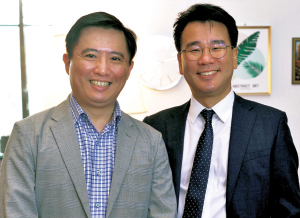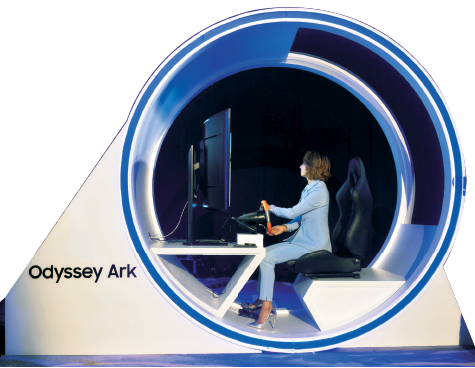
This article first appeared in Digital Edge, The Edge Malaysia Weekly on November 28, 2022 - December 4, 2022
Display technology has become increasingly crucial for businesses to engage with their customers. Ranging from digital signage and kiosks to the familiar monitors, it has seen a remarkable shift in its role in the hybrid world.
Among its functions are helping businesses make a lasting impression and transforming the customer experience. For example, display technology can be used to enthral customers as they walk into lobbies and multifunctional spaces.
It is also about efficiency. Kiosks have become a regular sight at fast food outlets and they have helped businesses increase the speed of their service and reduce waiting times for customers, who no longer have to wait in line to place an order.
“It’s no longer about putting up a poster. Rather, it’s to take the opportunity to interact with customers and share the brand’s message to really get them to connect with the brand. From a display point of view, we are trying to become immersive, to bring brands and customers closer to each other,” says Leslie Goh, head of regional display solutions in Southeast Asia and Oceania at Samsung Electronics Co Ltd.
“We are focusing on future technologies as well as on the premium segment. Our focus is on improving picture quality and reliability,” adds his colleague Alex Hong, head of Asia sales and marketing group, display solutions.
Goh and Hong spoke to Digital Edge on the sidelines of the Samsung Display Tech Summit 2022 that was held in Bangkok, Thailand, on Sept 13 and 14. The inaugural event was attended by 230 enterprise customers, tech enthusiasts and pro audio-visual partners from across the region.
The evolution of displays
Display technology has changed considerably over the years. From mere screens with limited engagement, displays have become increasingly interactive over the years. During the pandemic, displays were seen as the bridge between the virtual and physical worlds as schools and businesses learnt to operate online.
Samsung’s solutions such as the Samsung Flip monitor have the capability to make meetings more productive for their participants. With the Flip, users can interact with the screen to jot down notes or scribble on it. Essentially, it merges the traditional whiteboard experience with the digital realm. The classroom and meeting experience can be elevated further with integrated video call apps, multiple connectivity and wireless screen sharing.
Customers are increasingly demanding more dependable monitors even at home — they are a mainstay in most home offices. Employees and students are expected to be more efficient and meet tight deadlines, while maintaining their family life.
Enter the 32in Samsung Smart Monitor M8, with its ultra-high definition (UHD) resolution and slim fit cam, which fits seamlessly into the hybrid world. Users can use the monitor for both work and play — for example, they can stream shows without having to connect the monitor to a computer or television.
“People are working from home and in offices. How can we work more effectively? Today, you don’t actually have to bring your laptop home from work. All you need to do is take your phone, go to your monitor, tap it and your monitor will be connected to your phone,” says Goh.
“You’ll be able to access all your office files, presentations and excel sheets through the cloud, making your life simpler and more effective. This is all possible through innovation.”
As with any widely used product, there is stigma attached to it. Video games, for instance, are thought to cause violent behaviour and mental illness. Similarly, improper use of display technology can cause fatigue, eye strain, upper limb problems and backaches, states the Health and Safety Executive website.
Goh concurs that it is in the nature of people to engage excessively with a product they are immersed in. Thus, Samsung’s monitors provide reminders to users that it is time to wind down. To reduce eye strain linked with long hours of work, the Samsung ViewFinity S8 comes with intelligent eye care functionality.
With the increasing advocacy of digital inclusion, companies are focusing on improving digital accessibility through their products. In the World Benchmarking Alliance Digital Inclusion Benchmark 2021, Samsung was ranked fourth out of 150 companies worldwide.
According to the Samsung Newsroom, the brand enhances its display technologies to make them more accessible to all users. For example, those with colour vision deficiencies are able to have an improved viewing experience through Samsung’s See Colours app that makes colour adjustments with optimised colours.
Display technology helps small and medium enterprises elevate their businesses and improve the customer experience. In a world where customers and businesses have to transition between the physical and virtual, display technology serves as the bridge.
Goh says digital signage can alter people’s impression of smaller establishments. “When you walk into an establishment [with display technologies], it looks better and customers are willing to pay more. It helps to level the playing field.”
Save by subscribing to us for your print and/or digital copy.
P/S: The Edge is also available on Apple's App Store and Android's Google Play.


